25 U.S. Films Deemed Essential to Preserve
The Library of Congress has announced the 25 films that have been added for 2013 to the U.S. National Film Registry. As each year, the selection includes classics, gems, curiosities, and some films you may well consider duds.
n
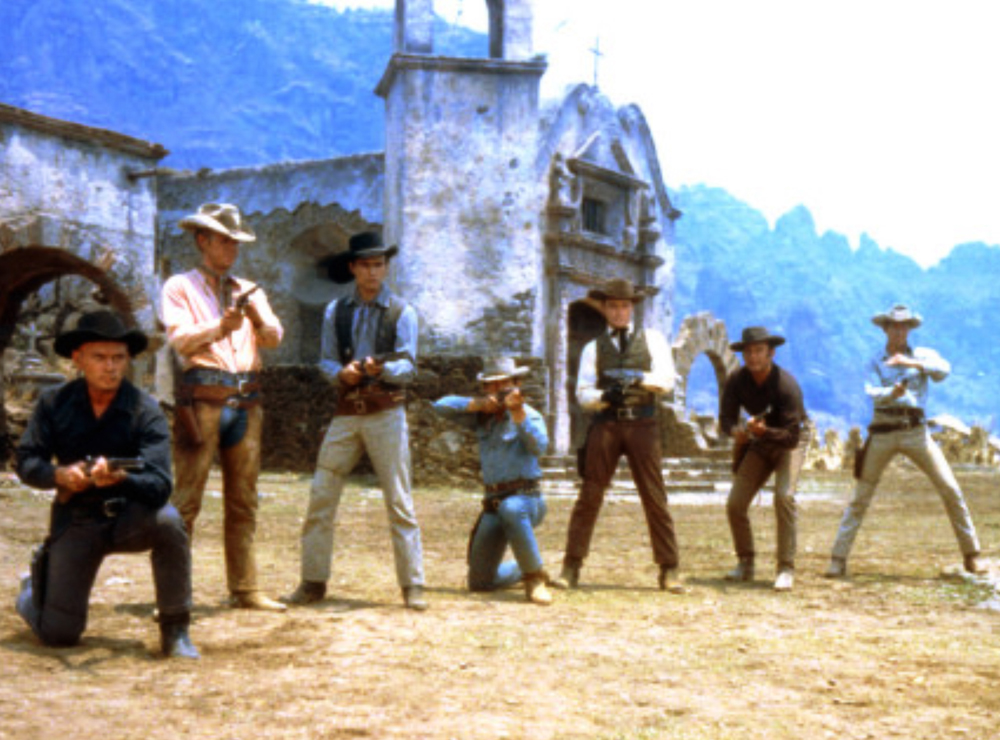
“The Magnificent Seven” (1960). All images courtesy of the Library of Congress.
Nonetheless, in the judgment of the Librarian of Congress, James H. Billington, the 25 films he announced this week as the latest to be entered onto the National Film Registry are all of great cultural, historic, or aesthetic significance to the country. As such, they will be guaranteed preservation either through the Library’s motion-picture preservation program or through collaborations with other archives, motion-picture studios, and independent filmmakers.
The Registry results from the National Film Preservation Act of 1988, which requires that each year the Librarian of Congress register 25 films that are “culturally, historically or aesthetically” significant and at least 10 years old. The Librarian selects films after reviewing hundreds of titles nominated by the public and conferring with Library film curators and members of the National Film Preservation Board, a body of prominent film-industry figures. (If you’d like to nominate something for next year, go now to the NFPB’s website.)
For each title named to the registry, the Library of Congress Packard Campus for Audio Visual Conservation works to ensure that the film is preserved indefinitely. The Packard Campus is a state-of-the-art facility where the nation’s library acquires, preserves, and provides access to the world’s largest and most comprehensive collection of films, television programs, radio broadcasts, and sound recordings (www.loc.gov/avconservation).
Its collection holds more than 7 million items, while its staff support the Library of Congress National Film Preservation Board, the National Recording Preservation Board, and the National Registries for film and recorded sound.
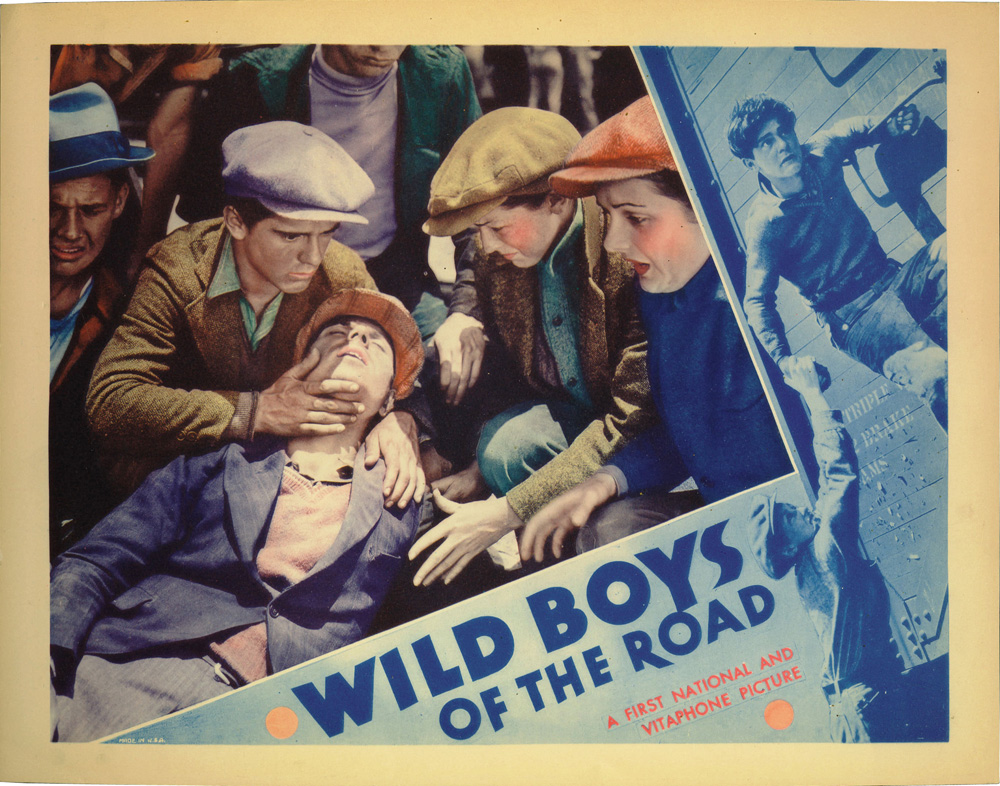
“Wild Boys of the Road,” 1933
For Billington, the National Film Registry “stands among the finest summations of more than a century of extraordinary American cinema,” as he said in announcing the 25 new additions. The registry is all the more important given that “this key component of American cultural history … is endangered.”
That is illustrated most starkly in what remains of the first decades of American film. The Library recently released a report documenting the sorry fact that 70 percent of American silent feature films appear to be lost, probably forever, while only 14 percent exist in their original 35 mm format. In this year’s selection are three silents: Daughter of Dawn, from 1920, which featured an all-Native-American cast of Comanches and Kiowas; A Virtuous Vamp, a 1919 spoof of workplace romance that catapulted Constance Talmadge to stardom; and the 1926 Cinderella comedy, Ella Cinders, featuring Colleen Moore as an early version of the flapper, emancipated but insouciant rather than the later, overtly sexual models provided by Clara Bow and Joan Crawford.
Spanning the period 1919-2002, this year’s 25 new Registry entries also include Hollywood classics, documentaries, and independent and experimental motion pictures. Those bring the number of films in the registry to 625, a small part of the Library’s vast moving-image collection of 1.2 million items.
What do you think of these? If you think you can nominate better, go to for next year, go to the NFPB’s website, and do just that.
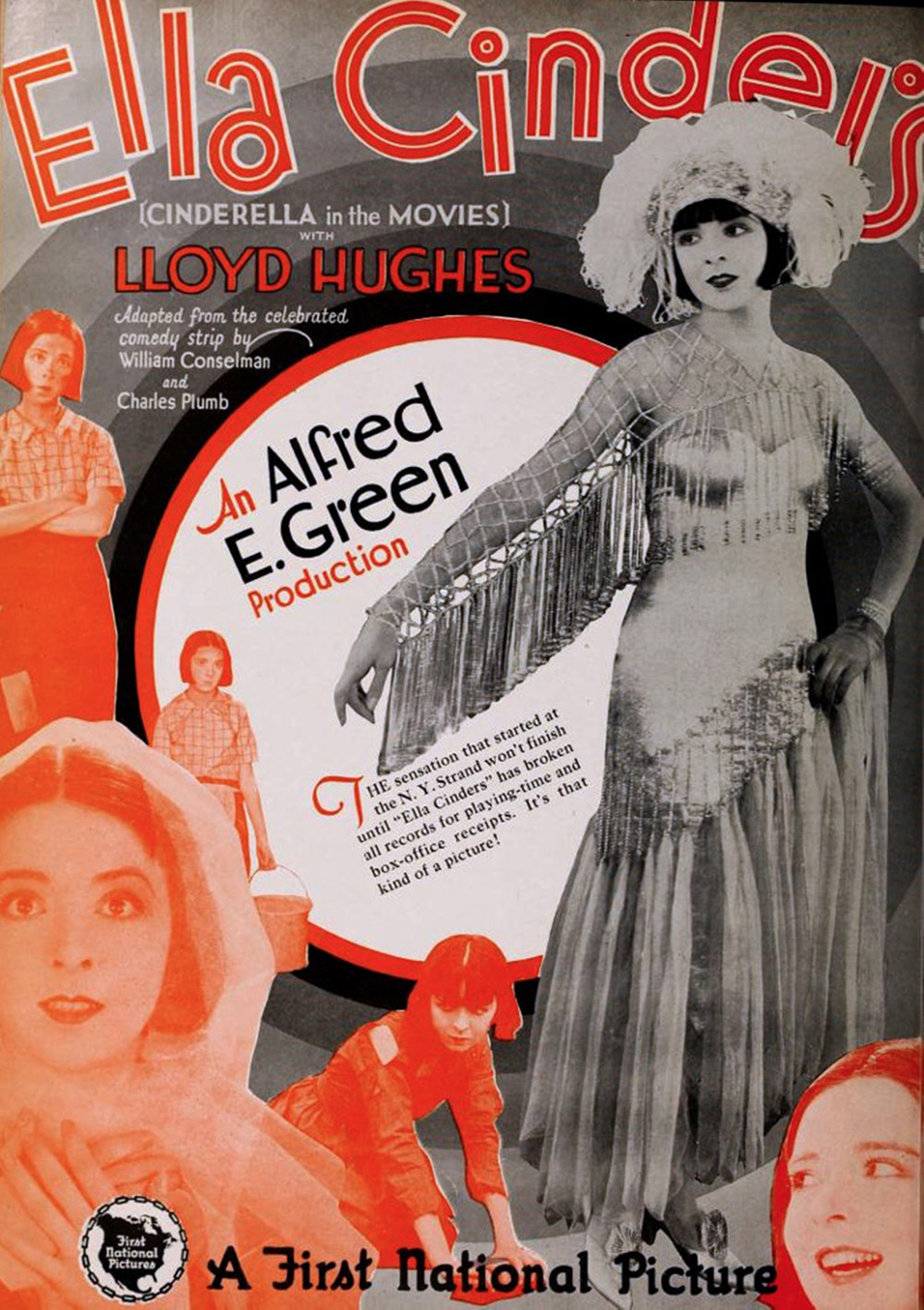 Here are this year’s 25 films, followed by descriptions provided in part by the Library of Congress announcement.
Here are this year’s 25 films, followed by descriptions provided in part by the Library of Congress announcement.
- Bless Their Little Hearts (1984)
- Brandy in the Wilderness (1969)
- Cicero March (1966)
- Daughter of Dawn (1920)
- Decasia (2002)
- Ella Cinders (1926)
- Forbidden Planet (1956)
- Gilda (1946)
- The Hole (1962)
- Judgment at Nuremberg (1961)
- King of Jazz (1930)
- The Lunch Date (1989)
- The Magnificent Seven (1960)
- Martha Graham Early Dance film (1931-44)
- Mary Poppins (1964)
- Men & Dust (1940)
- Midnight (1939)
- Notes on the Port of St. Francis (1951)
- Pulp Fiction (1994)
- The Quiet Man (1952)
- The Right Stuff (1983)
- Roger & Me (1989)
- A Virtuous Vamp (1919)
- Who’s Afraid of Virginia Woolf (1966)
- Wild Boys of the Road (1933)
n
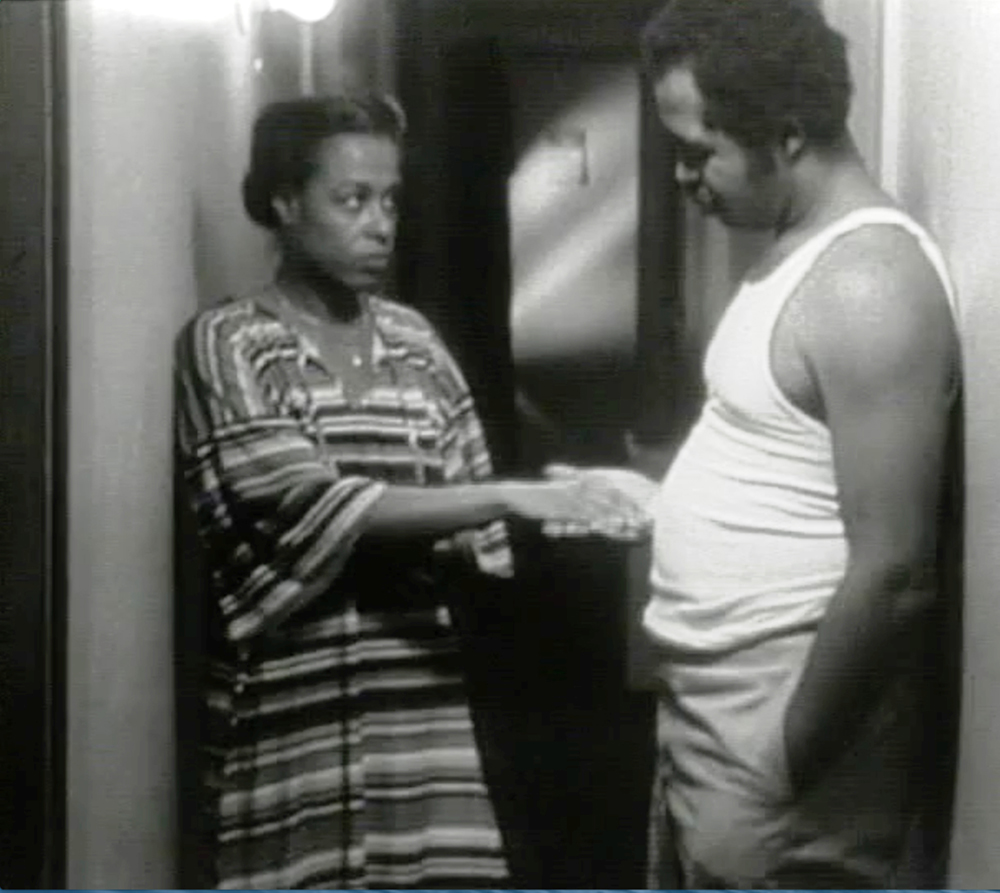
Bless Their Little Hearts (1984) Part of the vibrant New Wave of independent African-American filmmakers to emerge in the 1970s and 1980s, Billy Woodberry became a key figure in the movement known as the L.A. Rebellion. Bless Their Little Hearts (theatrical release 1984) was his UCLA thesis film. With script and cinematography by Charles Burnett, it is a spare, resonant portrait of a family’s grinding, daily-life sadness elevated with deft humor. “Its poetry lies in the exaltation of ordinary detail,” Jim Ridley wrote in the Village Voice.
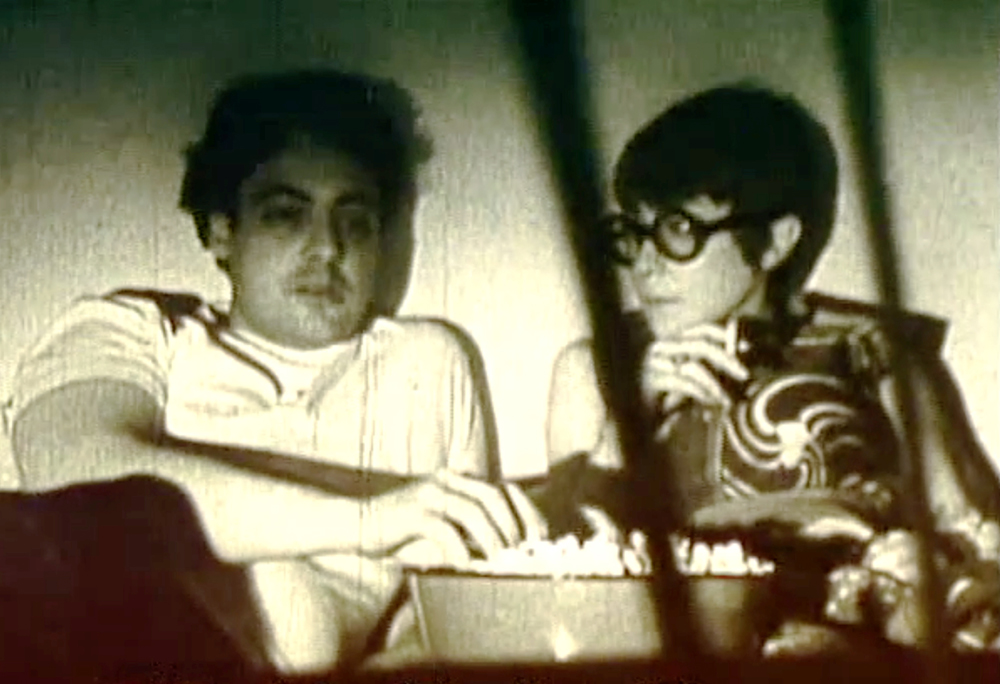 Brandy in the Wilderness (1969, above) A little-known yet key work of American indie film-making, Stanton Kaye’s introspective “contrived diary,” an evocative 1960s time capsule, features vignettes from the relationship of the director and his girlfriend. A simulated autobiography, it blurs lines between reality and illusion, moving in non-linear arcs through evolving, unpredictable interactions of relationship, time, and place. Paul Schrader noted: “It is probably quite impossible (and useless) to make a distinction between the point at which the film reflects their lives, and the point at which their lives reflect the film.”
Brandy in the Wilderness (1969, above) A little-known yet key work of American indie film-making, Stanton Kaye’s introspective “contrived diary,” an evocative 1960s time capsule, features vignettes from the relationship of the director and his girlfriend. A simulated autobiography, it blurs lines between reality and illusion, moving in non-linear arcs through evolving, unpredictable interactions of relationship, time, and place. Paul Schrader noted: “It is probably quite impossible (and useless) to make a distinction between the point at which the film reflects their lives, and the point at which their lives reflect the film.”
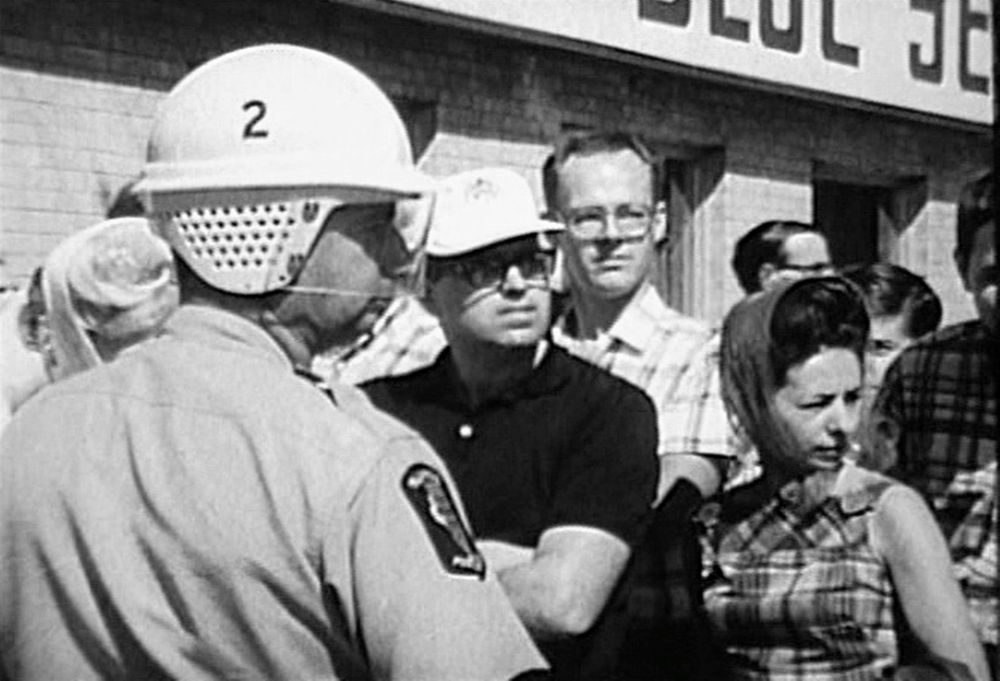 Cicero March (1966) During the summer of 1966, the Chicago Freedom Movement, led by Dr. Martin Luther King, Jr., targeted Chicago in a drive to end de facto segregation in northern cities and ensure better housing, education, and job opportunities for African Americans. After violent rioting and a month of demonstrations, the city reached an agreement to avoid a threatened march for open housing in the neighboring all-white town of Cicero, Ill., the scene of a riot 15 years earlier when a black couple tried to move into an apartment there. King called off further demonstrations, but other activists marched in Cicero on Sept. 4, an event preserved on film in this eight-minute, cinema-vérité-styled documentary. Using lightweight, handheld equipment, filmmakers from Chicago-based Film Group, Inc. situated themselves in the midst of confrontations and captured the viciousness of northern reactions to civil-rights reforms.
Cicero March (1966) During the summer of 1966, the Chicago Freedom Movement, led by Dr. Martin Luther King, Jr., targeted Chicago in a drive to end de facto segregation in northern cities and ensure better housing, education, and job opportunities for African Americans. After violent rioting and a month of demonstrations, the city reached an agreement to avoid a threatened march for open housing in the neighboring all-white town of Cicero, Ill., the scene of a riot 15 years earlier when a black couple tried to move into an apartment there. King called off further demonstrations, but other activists marched in Cicero on Sept. 4, an event preserved on film in this eight-minute, cinema-vérité-styled documentary. Using lightweight, handheld equipment, filmmakers from Chicago-based Film Group, Inc. situated themselves in the midst of confrontations and captured the viciousness of northern reactions to civil-rights reforms.
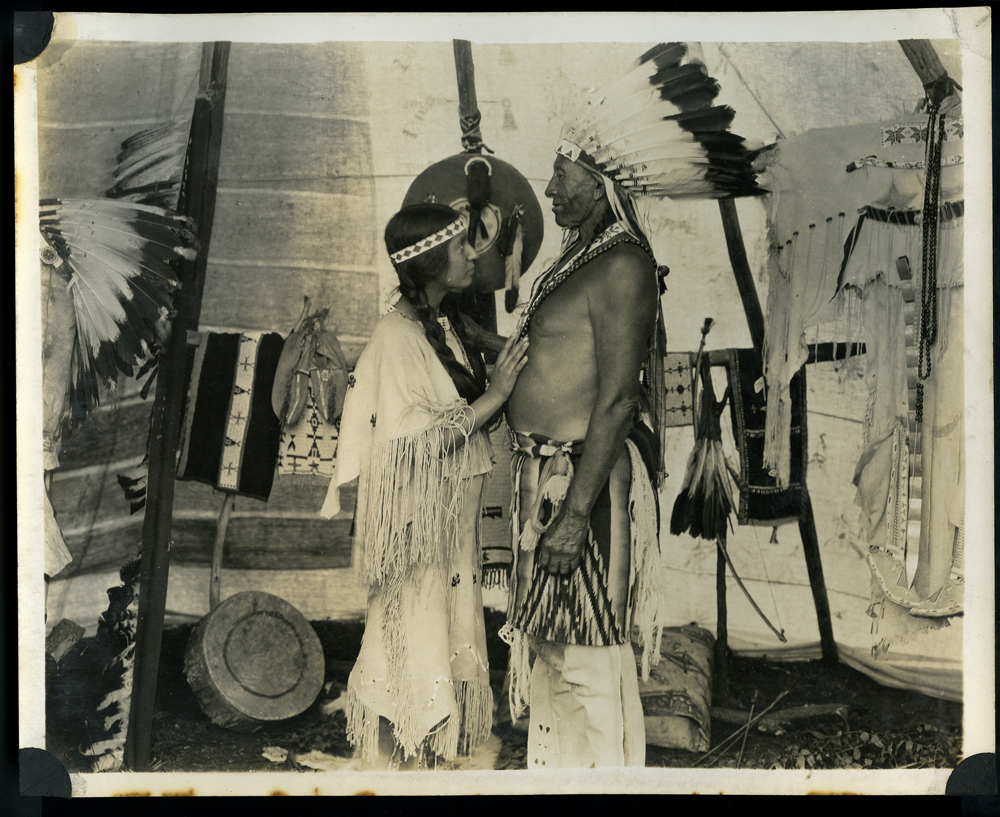 Daughter of Dawn (1920) The Oklahoma Historical Society recently rediscovered and restored, with a National Film Preservation Foundation grant, this example of independent, regional silent filmmaking’s daring and scope. It features an all-Native-American cast of Comanches and Kiowas. Although a fictional love-story narrative, it presents a rare record of Native-American customs, traditions and artifacts of the time.
Daughter of Dawn (1920) The Oklahoma Historical Society recently rediscovered and restored, with a National Film Preservation Foundation grant, this example of independent, regional silent filmmaking’s daring and scope. It features an all-Native-American cast of Comanches and Kiowas. Although a fictional love-story narrative, it presents a rare record of Native-American customs, traditions and artifacts of the time.
 Decasia (2002) Bill Morrison (see MIAN profile) created his film from scraps of decades-old decomposing nitrate “found film” that he culled from archives around the country. The effect is hypnotizing and teasing: images fade and transform; Morrison livens them even as they approach their demise, and distills it into an idiosyncratic art form capable of provoking “transports of sublime reverie amid pangs of wistful sorrow,” according to Lawrence Weschler (New York Times). “Ravishingly, achingly beautiful,” he said, is Morrison’s marriage of images and the discordant music of composer Michael Gordon of the Bang on a Can Collective.
Decasia (2002) Bill Morrison (see MIAN profile) created his film from scraps of decades-old decomposing nitrate “found film” that he culled from archives around the country. The effect is hypnotizing and teasing: images fade and transform; Morrison livens them even as they approach their demise, and distills it into an idiosyncratic art form capable of provoking “transports of sublime reverie amid pangs of wistful sorrow,” according to Lawrence Weschler (New York Times). “Ravishingly, achingly beautiful,” he said, is Morrison’s marriage of images and the discordant music of composer Michael Gordon of the Bang on a Can Collective.
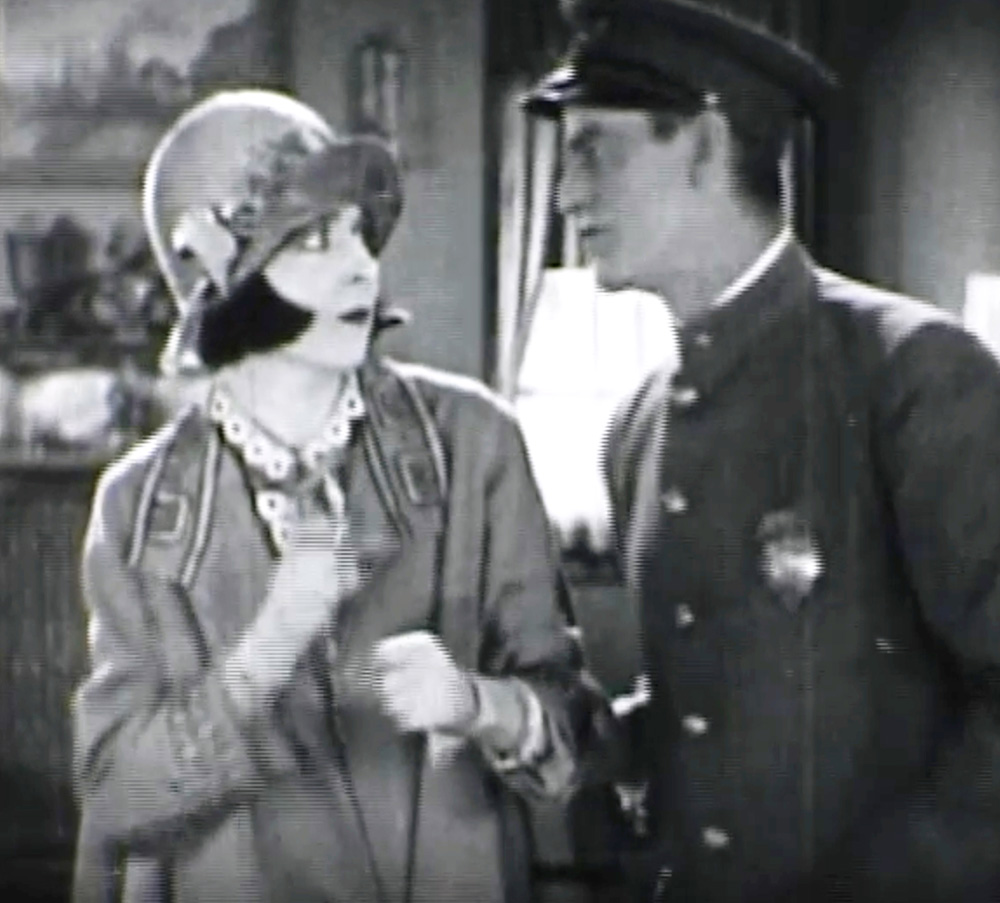 Ella Cinders (1926) With her trendsetting Dutch bob haircut and short skirts, Colleen Moore brought insouciance and innocence to the flapper image, character and aesthetic. By 1926, however, her interpretation of the flapper had been eclipsed by the more overtly sexual version popularized by Clara Bow or Joan Crawford. Ella (Moore) wins a studio contract in a movie-magazine-sponsored beauty contest. The tale is “filled with those wild incidents which are seldom heard of in ordinary society,” wrote the New York Times reviewer Mordaunt Hall. “Miss Moore is energetic and vivacious.” The archetypal 1920s comedy featured a star whose air of emancipation inspired her generation.
Ella Cinders (1926) With her trendsetting Dutch bob haircut and short skirts, Colleen Moore brought insouciance and innocence to the flapper image, character and aesthetic. By 1926, however, her interpretation of the flapper had been eclipsed by the more overtly sexual version popularized by Clara Bow or Joan Crawford. Ella (Moore) wins a studio contract in a movie-magazine-sponsored beauty contest. The tale is “filled with those wild incidents which are seldom heard of in ordinary society,” wrote the New York Times reviewer Mordaunt Hall. “Miss Moore is energetic and vivacious.” The archetypal 1920s comedy featured a star whose air of emancipation inspired her generation.
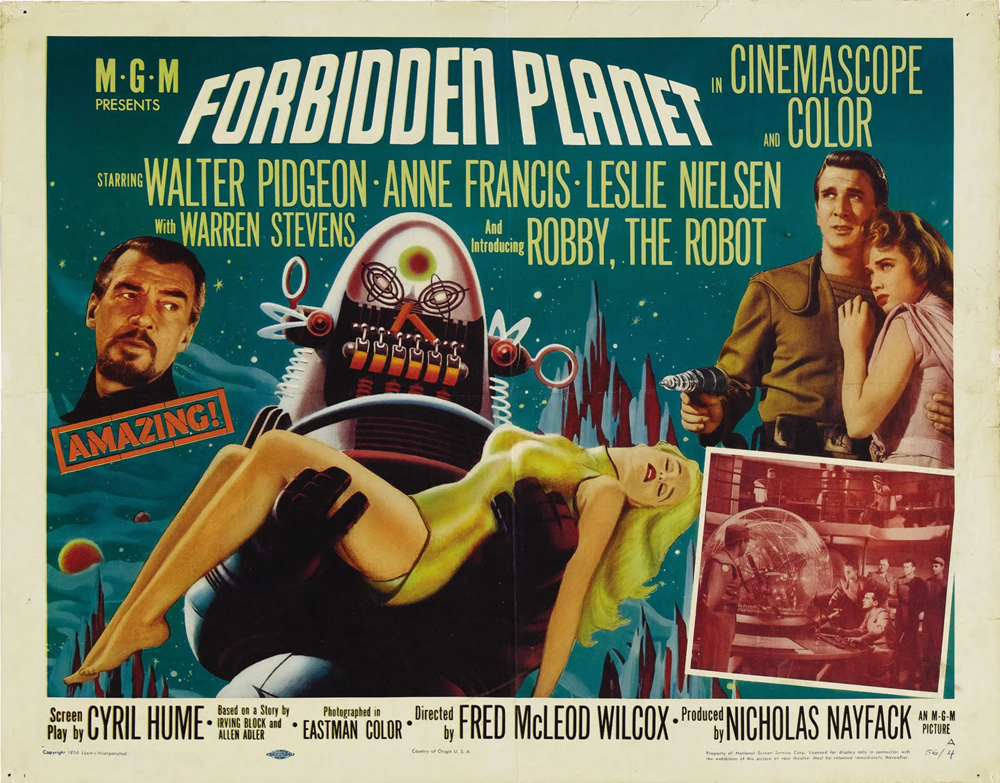 Forbidden Planet (1956) Fred M. Wilcox’s MGM’s film was seminal science fiction of the 1950s. The genre revitalized after World War II within America’s new post-nuclear age. Loosely based on Shakespeare’s The Tempest, it is both sci-fi saga and allegory about the dangers of unlimited power and unrestrained technology. Its special effects and visual style pushed the boundaries of cinematic science fiction and inspired generations of successors such as Gene Roddenberry. For the first time, all action happened intergalatically (not on Earth) and humans appeared as space travelers jetting off to the far reaches of the cosmos. Also innovative was the film’s score—or lack of one. The film’s soundtrack is all ambient sounds: electronic tonalities created by Louis and Bebe Barren. Walter Pidgeon, Leslie Nielsen, Anne Francis, and Robbie the Robot (in his debut) played the heroes.
Forbidden Planet (1956) Fred M. Wilcox’s MGM’s film was seminal science fiction of the 1950s. The genre revitalized after World War II within America’s new post-nuclear age. Loosely based on Shakespeare’s The Tempest, it is both sci-fi saga and allegory about the dangers of unlimited power and unrestrained technology. Its special effects and visual style pushed the boundaries of cinematic science fiction and inspired generations of successors such as Gene Roddenberry. For the first time, all action happened intergalatically (not on Earth) and humans appeared as space travelers jetting off to the far reaches of the cosmos. Also innovative was the film’s score—or lack of one. The film’s soundtrack is all ambient sounds: electronic tonalities created by Louis and Bebe Barren. Walter Pidgeon, Leslie Nielsen, Anne Francis, and Robbie the Robot (in his debut) played the heroes.
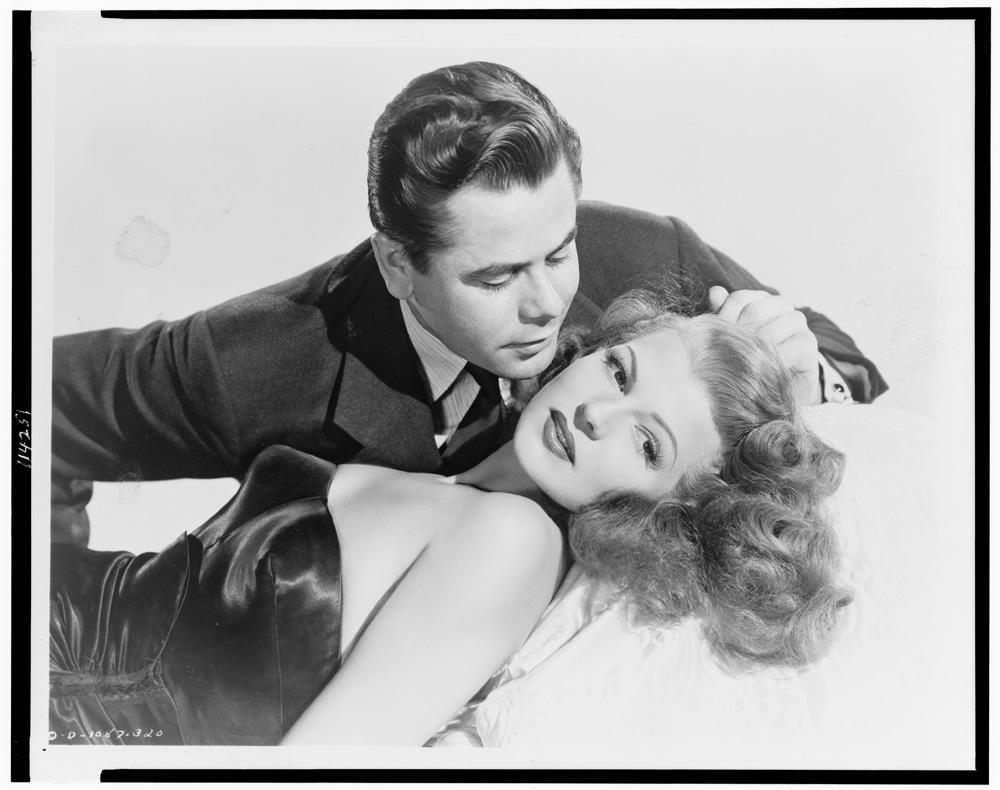 Gilda (1946) World War II ushered in a dark edge in American psyche – and film noir. And Charles Vidor’s film defined the Hollywood glamorization of film noir—long on sex appeal but short on substance. Vidor capitalized on the voyeuristic and sadomasochistic angles of film noir—and on fetishizing Rita Hayworth in strapless black satin evening gown and elbow-length gloves, sashaying to “Put the Blame on Mame.” With her, George Macready and Glenn Ford form a tempestuous triangle, but the film was, and remains, all about Hayworth.
Gilda (1946) World War II ushered in a dark edge in American psyche – and film noir. And Charles Vidor’s film defined the Hollywood glamorization of film noir—long on sex appeal but short on substance. Vidor capitalized on the voyeuristic and sadomasochistic angles of film noir—and on fetishizing Rita Hayworth in strapless black satin evening gown and elbow-length gloves, sashaying to “Put the Blame on Mame.” With her, George Macready and Glenn Ford form a tempestuous triangle, but the film was, and remains, all about Hayworth.
 The Hole (1962) Legendary animators John and Faith Hubley created this “observation,” a chilling Academy Award-winning meditation on the possibility of an accidental nuclear catastrophe. Jazz great Dizzy Gillespie and actor George Mathews improvised a lively dialogue that the Hubleys and their animators used as the voices of two New York construction workers laboring under Third Avenue. A highly stylized Russian animated film that John Hubley watched (at the suggestion of Frank Lloyd Wright) early in his career, while an animator for the Disney studios, radically shaped his expectations of animation. In The Hole, the Hubleys ominously, yet humorously, commented on the fears of nuclear devastation ever-present in cold war American culture around the time of the Cuban Missile crisis.
The Hole (1962) Legendary animators John and Faith Hubley created this “observation,” a chilling Academy Award-winning meditation on the possibility of an accidental nuclear catastrophe. Jazz great Dizzy Gillespie and actor George Mathews improvised a lively dialogue that the Hubleys and their animators used as the voices of two New York construction workers laboring under Third Avenue. A highly stylized Russian animated film that John Hubley watched (at the suggestion of Frank Lloyd Wright) early in his career, while an animator for the Disney studios, radically shaped his expectations of animation. In The Hole, the Hubleys ominously, yet humorously, commented on the fears of nuclear devastation ever-present in cold war American culture around the time of the Cuban Missile crisis.
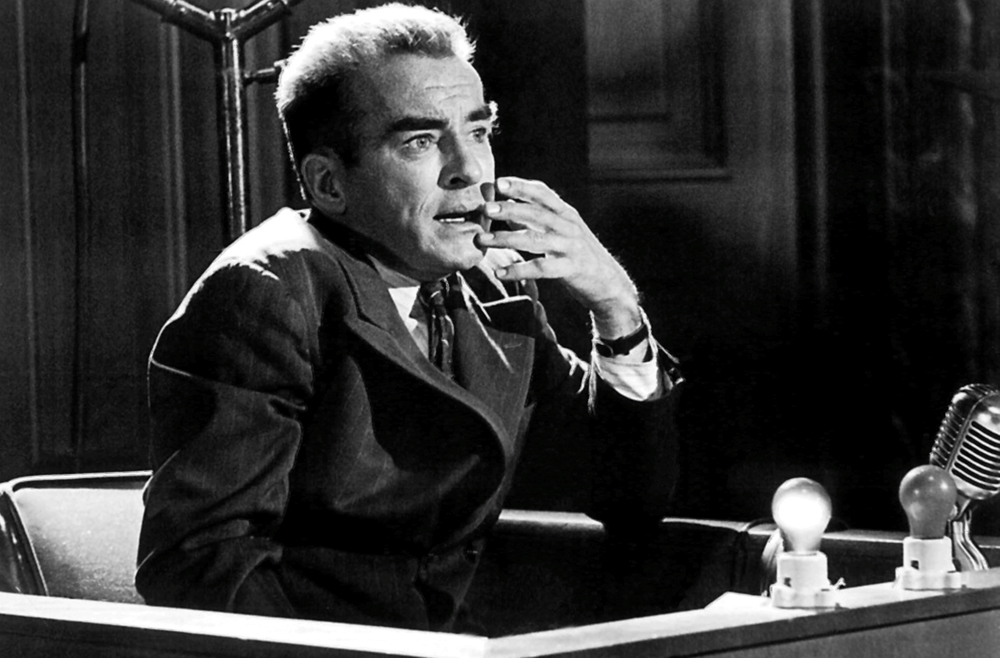 Judgment at Nuremberg (1961) By focusing on the “Justices Trial” of the post-World War II Nuremberg war crimes tribunal rather than the more publicized trials of major Nazi war criminals, this film went beyond condemning Nazi perpetrators to interrogate the concept of justice in modern societies. Screenwriter Abby Mann conceived the film against a backdrop of McCarthyist political persecution in the U.S., and argues that human-rights norms must be preserved even if they conflict with national imperatives. Mann’s screenplay, originally produced as a Playhouse 90 teleplay, makes “the value of a single human being” the defining societal value that legal systems must respect. Judgment at Nuremberg startled audiences by placing into its narrative seven minutes of footage from concentration camps. The film brought Academy Awards to Mann and actor Maximilian Schell, the stand-out in an all-star cast.
Judgment at Nuremberg (1961) By focusing on the “Justices Trial” of the post-World War II Nuremberg war crimes tribunal rather than the more publicized trials of major Nazi war criminals, this film went beyond condemning Nazi perpetrators to interrogate the concept of justice in modern societies. Screenwriter Abby Mann conceived the film against a backdrop of McCarthyist political persecution in the U.S., and argues that human-rights norms must be preserved even if they conflict with national imperatives. Mann’s screenplay, originally produced as a Playhouse 90 teleplay, makes “the value of a single human being” the defining societal value that legal systems must respect. Judgment at Nuremberg startled audiences by placing into its narrative seven minutes of footage from concentration camps. The film brought Academy Awards to Mann and actor Maximilian Schell, the stand-out in an all-star cast.
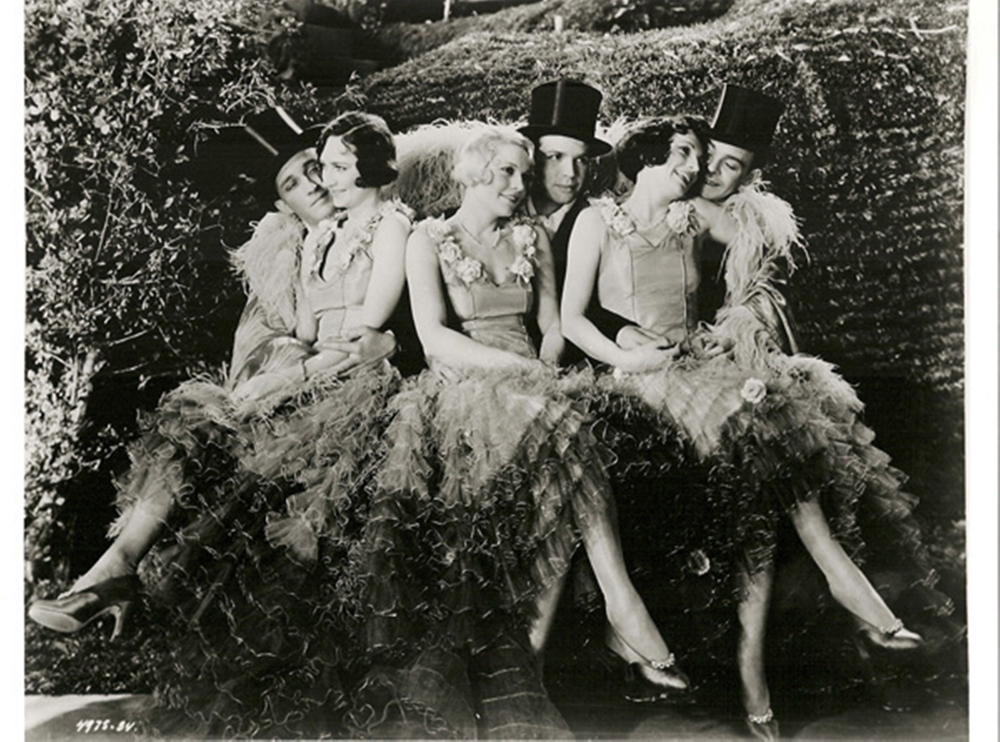 King of Jazz (1930) This musical from the earliest days of two-color Technicolor is a fanciful revue of short skits, sight gags, and musical numbers orchestrated by Paul Whiteman, the self-proclaimed “King of Jazz.” John Murray Anderson and an uncredited Paul Fejos directed, and attempted to deliver “something for everyone” — a Walter Lantz cartoon for children; scantily-clad leggy dancers and contortionists for the male audience; the crooning of heartthrob Bing Crosby in his first screen appearance… Also featured was a production number of George Gershwin’s “Rhapsody in Blue.”
King of Jazz (1930) This musical from the earliest days of two-color Technicolor is a fanciful revue of short skits, sight gags, and musical numbers orchestrated by Paul Whiteman, the self-proclaimed “King of Jazz.” John Murray Anderson and an uncredited Paul Fejos directed, and attempted to deliver “something for everyone” — a Walter Lantz cartoon for children; scantily-clad leggy dancers and contortionists for the male audience; the crooning of heartthrob Bing Crosby in his first screen appearance… Also featured was a production number of George Gershwin’s “Rhapsody in Blue.”
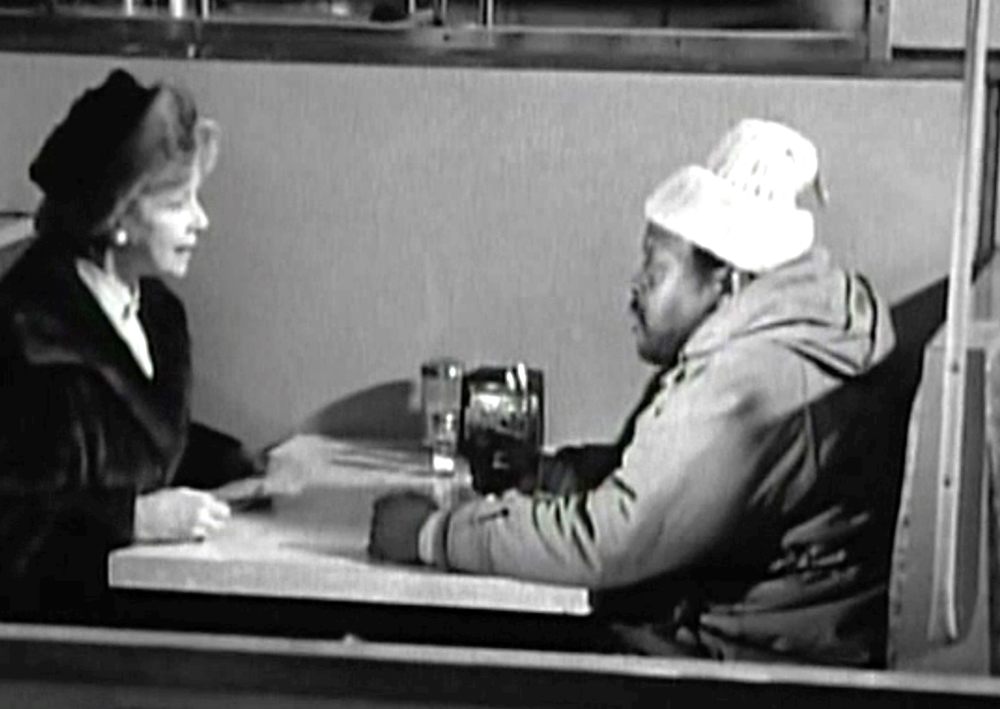 The Lunch Date (1989) Adam Davidson’s 10-minute Columbia University student film examines how being removed from one’s comfort zone can erode haughty self-confidence. A woman has a train-station chance encounter with a homeless man, and stumbles through several off-key reactions when they share a salad she believes is hers. Winner of a 1990 Student Academy Award, the film is a simple yet effective parable on the vicissitudes and pervasiveness of perception, race, and stereotypes.
The Lunch Date (1989) Adam Davidson’s 10-minute Columbia University student film examines how being removed from one’s comfort zone can erode haughty self-confidence. A woman has a train-station chance encounter with a homeless man, and stumbles through several off-key reactions when they share a salad she believes is hers. Winner of a 1990 Student Academy Award, the film is a simple yet effective parable on the vicissitudes and pervasiveness of perception, race, and stereotypes.
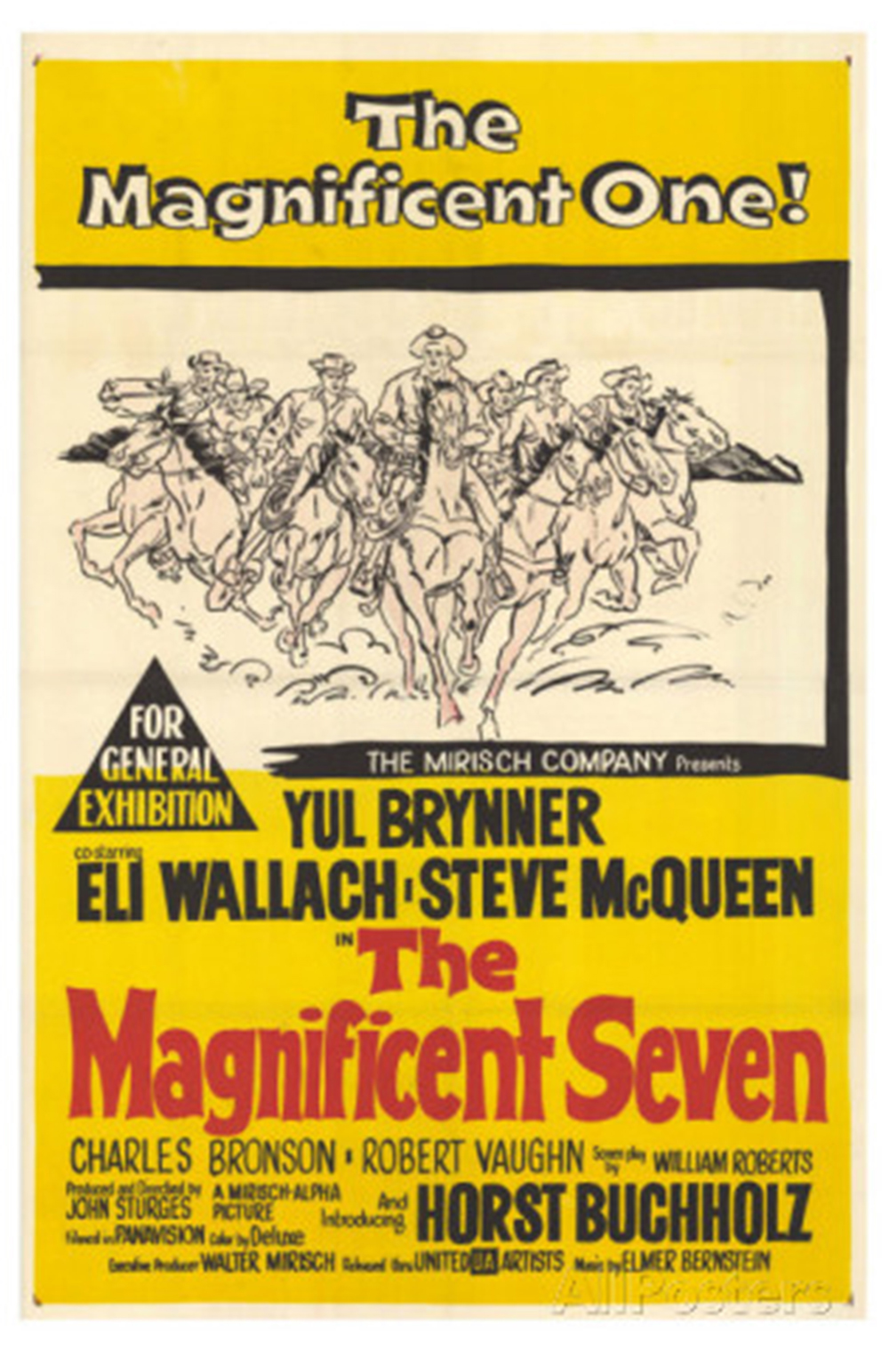 The Magnificent Seven (1960) The Hollywood western adaptation of Akira Kurosawa’s Seven Samurai (1954) was a springboard for several young actors on the verge of successful careers: Steve McQueen, Charles Bronson, James Coburn, Robert Vaughn and Horst Buchholz. The film also gave a new twist to the career of Yul Brynner. Brynner bought the rights to Kurosawa’s original story and hand-picked John Sturges as its director. Sturges had earned a reputation as a solid director of Westerns such as “Bad Day at Black Rock” (1955) and “Gunfight at the O.K. Corral” (1957). Transporting the action from Japan to Mexico, where it was filmed on location, the story portrays a gang of paid gunslingers hired by farmers to rout the bandits pillaging their town. Contributing to the film’s popular appeal through the decades is Elmer Bernstein’s vibrant score, which would go on to become the theme music for Marlboro cigarette commercials from 1962 until cigarette advertising on television was banned in 1971.
The Magnificent Seven (1960) The Hollywood western adaptation of Akira Kurosawa’s Seven Samurai (1954) was a springboard for several young actors on the verge of successful careers: Steve McQueen, Charles Bronson, James Coburn, Robert Vaughn and Horst Buchholz. The film also gave a new twist to the career of Yul Brynner. Brynner bought the rights to Kurosawa’s original story and hand-picked John Sturges as its director. Sturges had earned a reputation as a solid director of Westerns such as “Bad Day at Black Rock” (1955) and “Gunfight at the O.K. Corral” (1957). Transporting the action from Japan to Mexico, where it was filmed on location, the story portrays a gang of paid gunslingers hired by farmers to rout the bandits pillaging their town. Contributing to the film’s popular appeal through the decades is Elmer Bernstein’s vibrant score, which would go on to become the theme music for Marlboro cigarette commercials from 1962 until cigarette advertising on television was banned in 1971.
 Martha Graham Early Dance Films (1931-1944) An eminent figure in the development of modern dance, Martha Graham formed in 1926 a dance company that became the longest continuously operating school of dance in America. She codified her revolutionary dance language — soon dubbed the “Graham Technique” — and it influenced generations of dancers and choreographers, including Twyla Tharp and Merce Cunningham. This quartet of silent films featuring Graham document four of her important early works. In Heretic, 1931, Graham is an outcast whom Puritans denounce; Frontier, 1936, celebrates western expansion and the American spirit; Lamentation, 1943, confronts death and mourning; Appalachian Spring, 1944, is a multi-character dance drama inspired by, but not accompanied by, Aaron Copland’s famous suite of the same name.
Martha Graham Early Dance Films (1931-1944) An eminent figure in the development of modern dance, Martha Graham formed in 1926 a dance company that became the longest continuously operating school of dance in America. She codified her revolutionary dance language — soon dubbed the “Graham Technique” — and it influenced generations of dancers and choreographers, including Twyla Tharp and Merce Cunningham. This quartet of silent films featuring Graham document four of her important early works. In Heretic, 1931, Graham is an outcast whom Puritans denounce; Frontier, 1936, celebrates western expansion and the American spirit; Lamentation, 1943, confronts death and mourning; Appalachian Spring, 1944, is a multi-character dance drama inspired by, but not accompanied by, Aaron Copland’s famous suite of the same name.
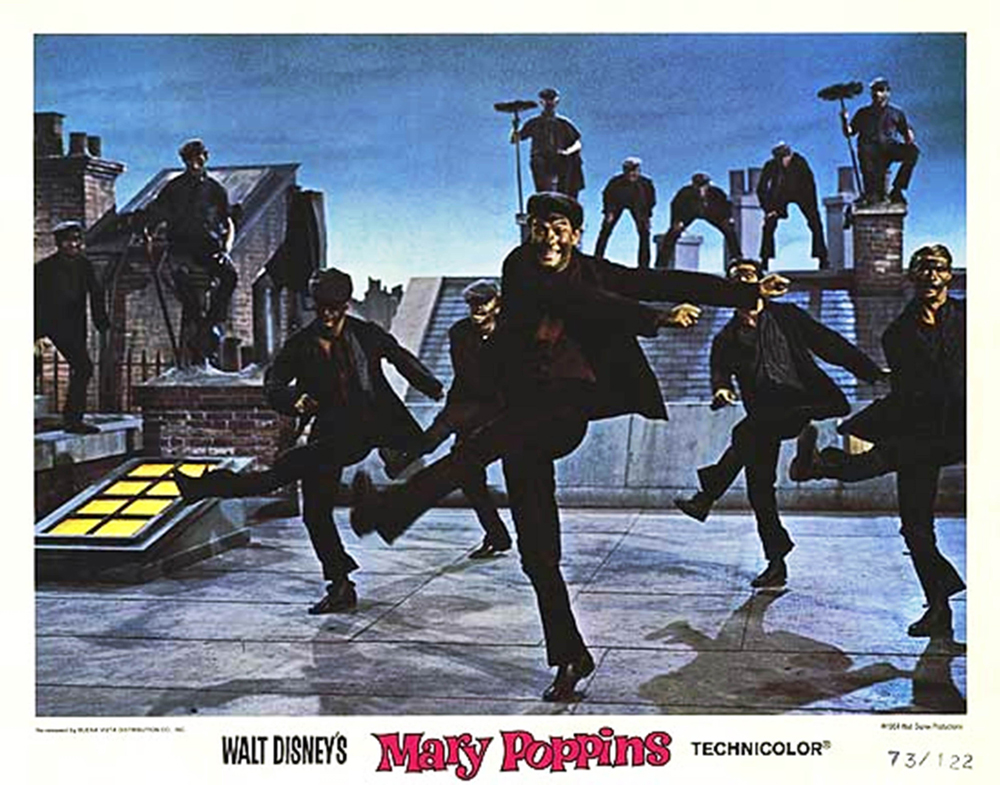 Mary Poppins (1964) Supposedly Walt Disney’s personal favorite of his many films, this musical, based on a book by P.L. Travers, screenwritten by Bill Walsh and Don DaGradi and songwriters the Sherman Brothers (Richard M. and Robert B.), features a peculiar nanny. A witty script, inventive visual style, and whistlable songs (you know ’em) have kept the film in favor for 50 years. Its fun and savvy sophistication made for a commercial success that solidified Disney’s knack for big-screen, non-cartoon storytelling and invention. In seamlessly integrating animation with live action, it prefigured umpteen later digital and CGI-aided effects. Julie Andrews, Dick Van Dyke, Jane Darwell, Glynis Johns, and Ed Wynn starred.
Mary Poppins (1964) Supposedly Walt Disney’s personal favorite of his many films, this musical, based on a book by P.L. Travers, screenwritten by Bill Walsh and Don DaGradi and songwriters the Sherman Brothers (Richard M. and Robert B.), features a peculiar nanny. A witty script, inventive visual style, and whistlable songs (you know ’em) have kept the film in favor for 50 years. Its fun and savvy sophistication made for a commercial success that solidified Disney’s knack for big-screen, non-cartoon storytelling and invention. In seamlessly integrating animation with live action, it prefigured umpteen later digital and CGI-aided effects. Julie Andrews, Dick Van Dyke, Jane Darwell, Glynis Johns, and Ed Wynn starred.
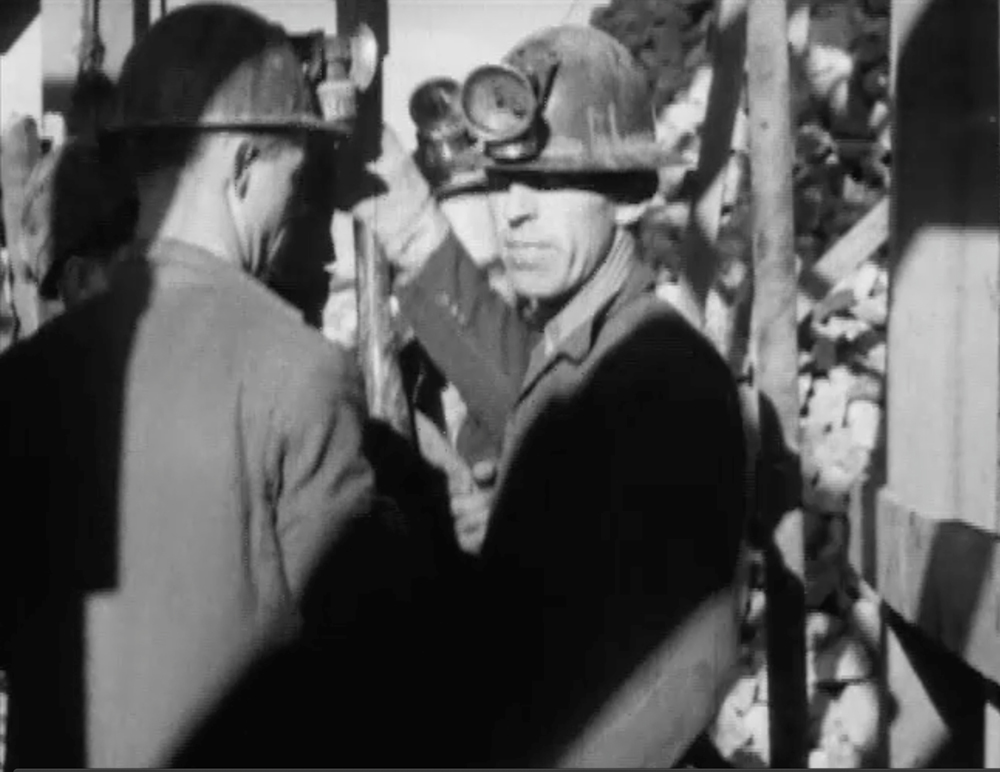 Men and Dust (1940) Documentary woman pioneer Lee Dick directed and her husband Sheldon Dick wrote and shot this labor advocacy film about diseases plaguing miners in Kansas, Missouri, and Oklahoma. The Tri-State Survey Committee sponsored the stylistically innovative documentary which remains a valuable ecological record of landscapes radically transformed by extractive industry.
Men and Dust (1940) Documentary woman pioneer Lee Dick directed and her husband Sheldon Dick wrote and shot this labor advocacy film about diseases plaguing miners in Kansas, Missouri, and Oklahoma. The Tri-State Survey Committee sponsored the stylistically innovative documentary which remains a valuable ecological record of landscapes radically transformed by extractive industry.
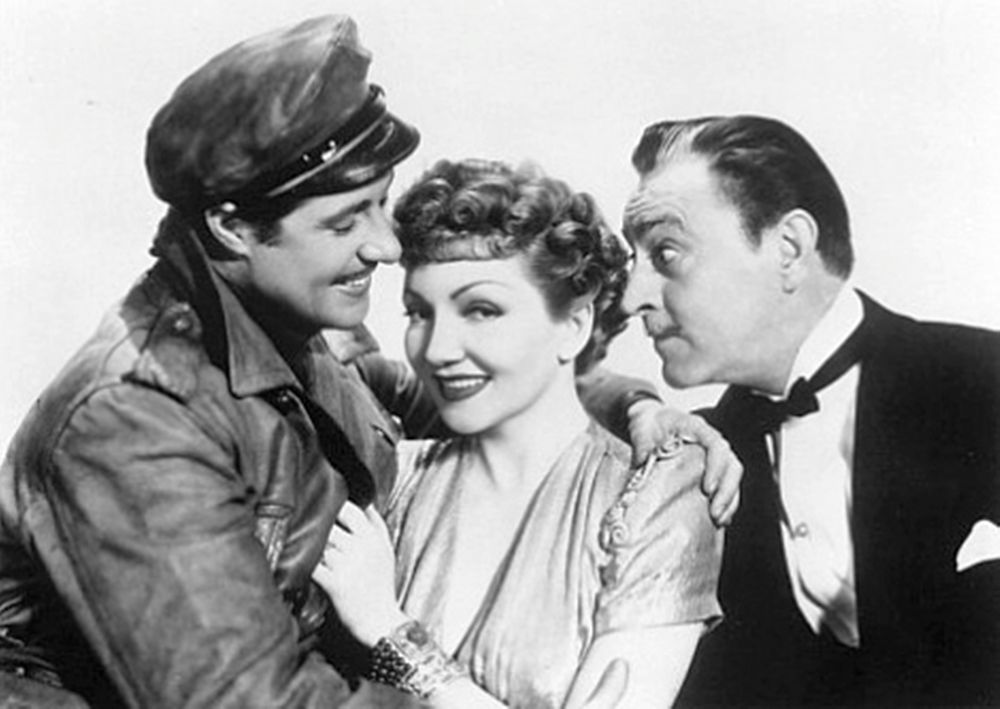 Midnight (1939) Claudette Colbert, Don Ameche, and John Barrymore star in this romantic comedy by Mitchell Liesen, who is often described as a “studio contract” director — a craftsman with no particular aesthetic vision or social agenda who is efficient, consistent, controlled, with occasional flashes of panache. Leisen’s strength lay in his timing. He claimed he gave his actors the proper “beat” with the tone and cadence of his voice as he called “ready…right…action!” The screenplay by dynamic duo Billy Wilder and Charles Brackett hilariously depicts a penniless showgirl (Colbert) who impersonates a Hungarian countess, aided by the aristocratic Barrymore, until, despite her best efforts, she falls for a lowly taxi driver (Ameche) — all that amidst a Continental sumptuousness abundant in Paramount pictures of that era. So many exceptional films appeared in 1939 that Midnight waa overlooked, but on release a New York Times reviewer called it “one of the liveliest, gayest, wittiest, and naughtiest comedies of a long hard season.” Leisen’s script changes so upset Wilder that he decided to become a director so he could assert more creative control.
Midnight (1939) Claudette Colbert, Don Ameche, and John Barrymore star in this romantic comedy by Mitchell Liesen, who is often described as a “studio contract” director — a craftsman with no particular aesthetic vision or social agenda who is efficient, consistent, controlled, with occasional flashes of panache. Leisen’s strength lay in his timing. He claimed he gave his actors the proper “beat” with the tone and cadence of his voice as he called “ready…right…action!” The screenplay by dynamic duo Billy Wilder and Charles Brackett hilariously depicts a penniless showgirl (Colbert) who impersonates a Hungarian countess, aided by the aristocratic Barrymore, until, despite her best efforts, she falls for a lowly taxi driver (Ameche) — all that amidst a Continental sumptuousness abundant in Paramount pictures of that era. So many exceptional films appeared in 1939 that Midnight waa overlooked, but on release a New York Times reviewer called it “one of the liveliest, gayest, wittiest, and naughtiest comedies of a long hard season.” Leisen’s script changes so upset Wilder that he decided to become a director so he could assert more creative control.
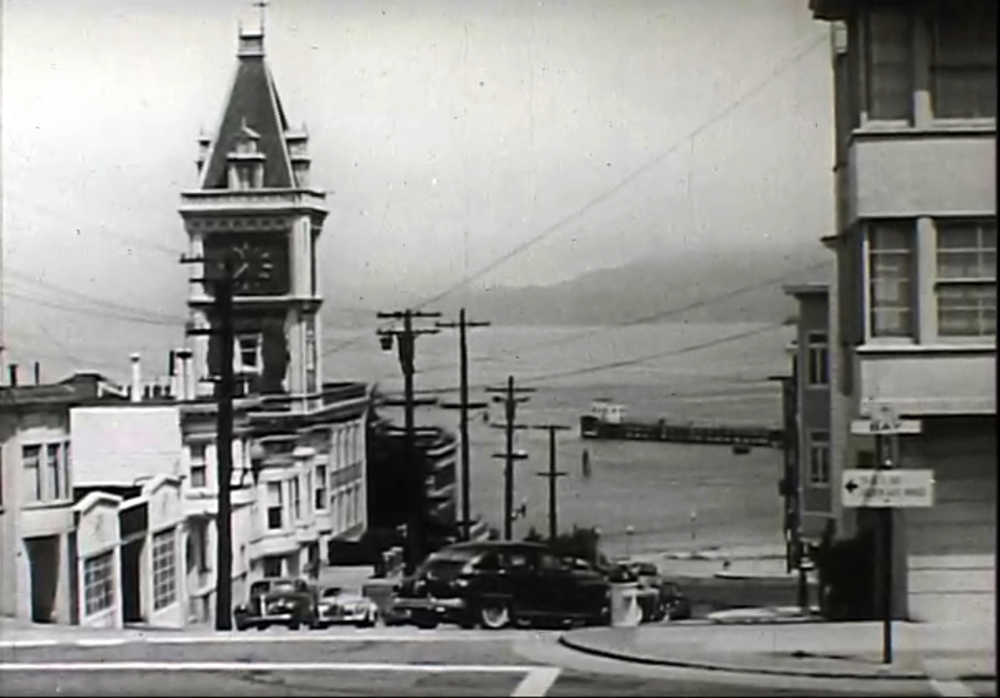 Notes on the Port of St. Francis (1951) When Frank Stauffacher introduced the Art in Cinema film series at the San Francisco Museum of Art in 1947, he was on his way to significantly influencing a generation of West Coast filmmakers. Through the series, he cultivated his knowledge of San Francisco surrealist films of the 1940s as well as the “city symphonies” produced by European filmmakers in the 1920s and 1930s. Notes on the Port of St. Francis expresses his appreciation for the abstract synthesis of film and place. Impressionistic and evocative, it takes shape from the director’s organization of iconic imagery, such as seascapes and city scenes, and their juxtaposition with a soundtrack of music and narration by Vincent Price of excerpts from Robert Louis Stevenson’s 1882 essay on San Francisco. Independent film scholar Scott MacDonald speculated that the “notes” in the film’s title may refer to “both the informality of his visuals and his care with sound that may have been a subtle way of connecting his film with the European city symphonies of the twenties.” Throughout the film, Macdonald observed, Stauffacher echoes Stevenson’s theme of the “City of Contrasts” by shooting from both San Francisco Bay and from the hills.
Notes on the Port of St. Francis (1951) When Frank Stauffacher introduced the Art in Cinema film series at the San Francisco Museum of Art in 1947, he was on his way to significantly influencing a generation of West Coast filmmakers. Through the series, he cultivated his knowledge of San Francisco surrealist films of the 1940s as well as the “city symphonies” produced by European filmmakers in the 1920s and 1930s. Notes on the Port of St. Francis expresses his appreciation for the abstract synthesis of film and place. Impressionistic and evocative, it takes shape from the director’s organization of iconic imagery, such as seascapes and city scenes, and their juxtaposition with a soundtrack of music and narration by Vincent Price of excerpts from Robert Louis Stevenson’s 1882 essay on San Francisco. Independent film scholar Scott MacDonald speculated that the “notes” in the film’s title may refer to “both the informality of his visuals and his care with sound that may have been a subtle way of connecting his film with the European city symphonies of the twenties.” Throughout the film, Macdonald observed, Stauffacher echoes Stevenson’s theme of the “City of Contrasts” by shooting from both San Francisco Bay and from the hills.
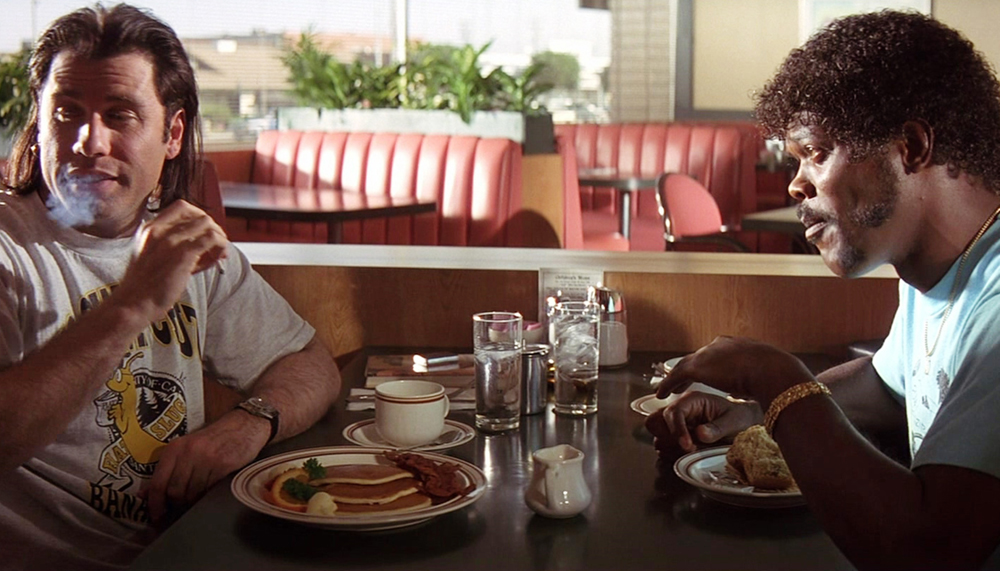 Pulp Fiction (1994) By turns utterly derivative and audaciously original, Quentin Tarantino’s mordantly wicked Möbius strip of a movie influenced a generation of filmmakers and stands as a milestone in the evolution of independent cinema in the United States. From his profane and poetic script, Tarantino composed a tour-de-force that combines narrative elements of hardboiled crime novels and film noir with the bright widescreen visuals of Sergio Leone.
Pulp Fiction (1994) By turns utterly derivative and audaciously original, Quentin Tarantino’s mordantly wicked Möbius strip of a movie influenced a generation of filmmakers and stands as a milestone in the evolution of independent cinema in the United States. From his profane and poetic script, Tarantino composed a tour-de-force that combines narrative elements of hardboiled crime novels and film noir with the bright widescreen visuals of Sergio Leone.
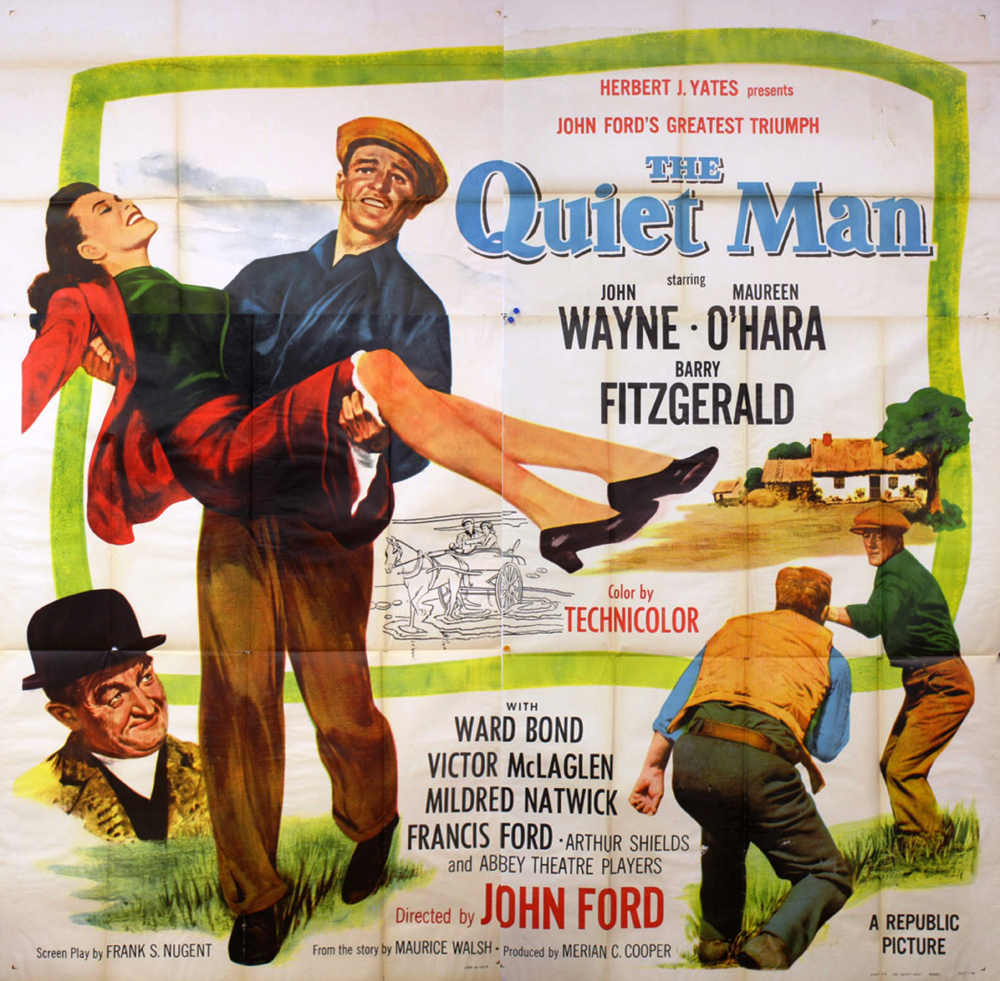 The Quiet Man (1952) John Ford’s tribute to Ireland and his Irish heritage. Against lush landscapes, fiery-red-haired Maureen O’Hara embodies the mystique of Ireland, as John Wayne personifies the indefatigable American searching for his ancestral roots, with Victor Young’s jovial score punctuating their escapades. Bordering on caricature are the sly, whiskey-loving matchmaker Michaleen O’Flynn (Barry Fitzgerald), the burly town bully Will Danaher (Victor McLaglen), and the put-upon but patient Widow Tillane (Mildred Natwick). Beautifully photographed in rich, saturated Technicolor by Winton C. Hoch, with picturesque art direction by Frank Hotaling.
The Quiet Man (1952) John Ford’s tribute to Ireland and his Irish heritage. Against lush landscapes, fiery-red-haired Maureen O’Hara embodies the mystique of Ireland, as John Wayne personifies the indefatigable American searching for his ancestral roots, with Victor Young’s jovial score punctuating their escapades. Bordering on caricature are the sly, whiskey-loving matchmaker Michaleen O’Flynn (Barry Fitzgerald), the burly town bully Will Danaher (Victor McLaglen), and the put-upon but patient Widow Tillane (Mildred Natwick). Beautifully photographed in rich, saturated Technicolor by Winton C. Hoch, with picturesque art direction by Frank Hotaling.
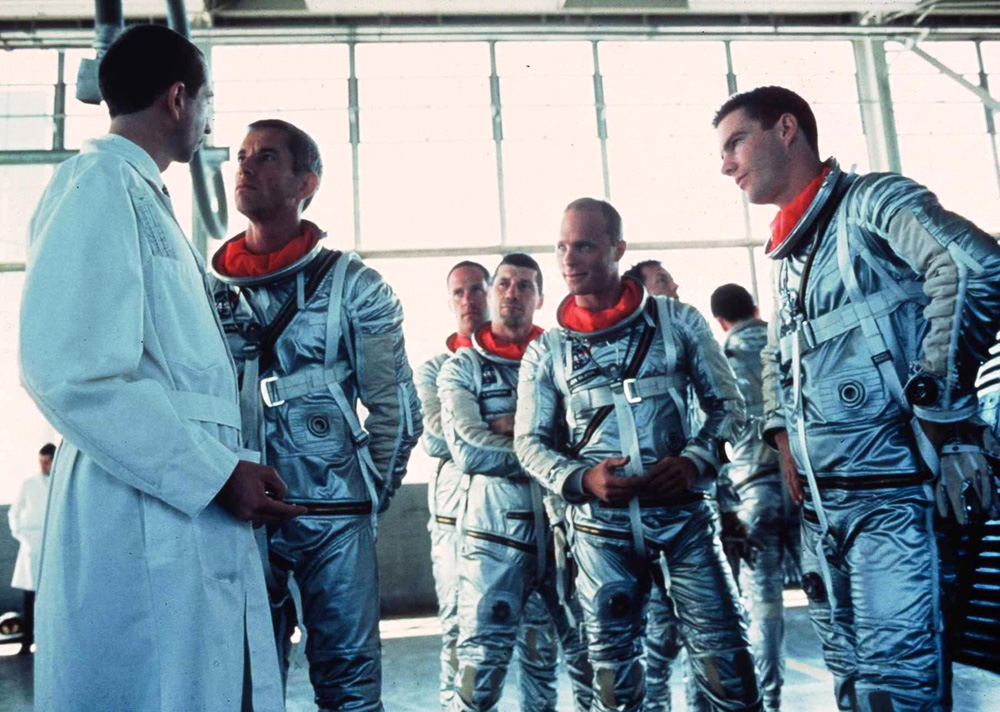 The Right Stuff (1983) Philip Kaufman’s epic adaptation of Tom Wolfe’s novel ambitiously evokes the nascent Space Age with elements of the Western and sophisticated satire. Kaufman, inspired by Wolfe, created his own history, debunking a few myths as he creates new ones. His tribute to the space program’s role in generating national pride and an indictment of media-fed hero worship features remarkable aerial sequences.
The Right Stuff (1983) Philip Kaufman’s epic adaptation of Tom Wolfe’s novel ambitiously evokes the nascent Space Age with elements of the Western and sophisticated satire. Kaufman, inspired by Wolfe, created his own history, debunking a few myths as he creates new ones. His tribute to the space program’s role in generating national pride and an indictment of media-fed hero worship features remarkable aerial sequences.
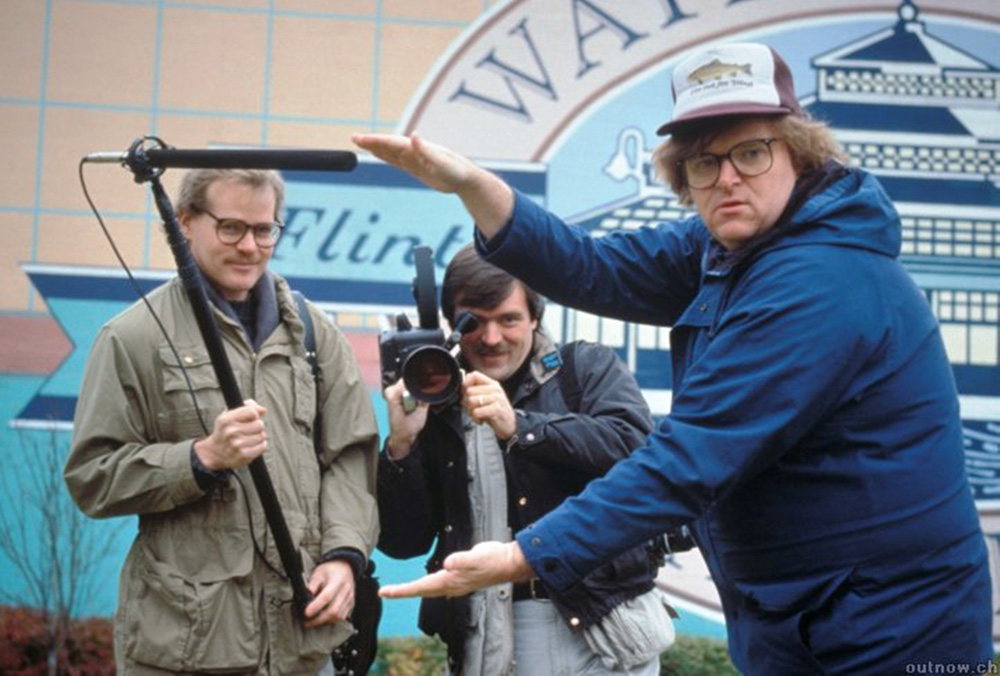 Roger & Me (1989) American automakers huge losses in the face of 1970s/80s foreign commercial and design challenges, especially from Japan, inform Michael Moore’s chronicle of the human toll that resulted. He focuses on the firing of 30,000 autoworkers by General Motors in his hometown, Flint, Michigan. As a narrative structure, Moore uses a comic device sometimes found in political campaign commercials, weaving a message around trying to find the person responsible for a wrong, in this case General Motors Chairman Roger Smith. In support of his take-no-prisoners, advocacy documentary filmmaking, Moore claimed his brazen, confrontational style fitted the situation he depicted. As full-of-itself preaching to the converted, it’s triumphant and just, or pompous, self-indulgent, and tedious – you choose.
Roger & Me (1989) American automakers huge losses in the face of 1970s/80s foreign commercial and design challenges, especially from Japan, inform Michael Moore’s chronicle of the human toll that resulted. He focuses on the firing of 30,000 autoworkers by General Motors in his hometown, Flint, Michigan. As a narrative structure, Moore uses a comic device sometimes found in political campaign commercials, weaving a message around trying to find the person responsible for a wrong, in this case General Motors Chairman Roger Smith. In support of his take-no-prisoners, advocacy documentary filmmaking, Moore claimed his brazen, confrontational style fitted the situation he depicted. As full-of-itself preaching to the converted, it’s triumphant and just, or pompous, self-indulgent, and tedious – you choose.
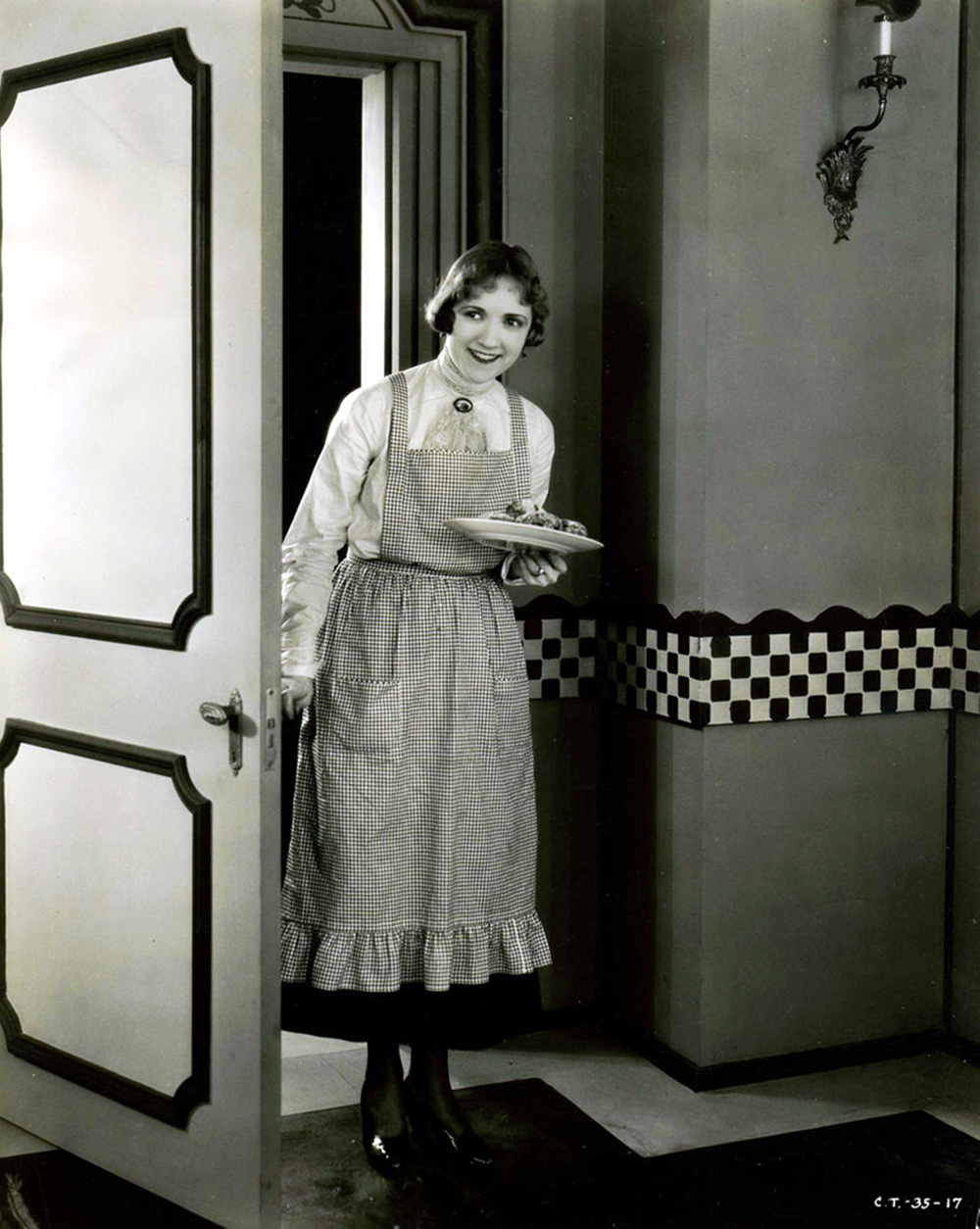 A Virtuous Vamp (1919) Employing a title suggested by Irving Berlin, screenwriter Anita Loos, working with husband John Emerson, crafted this charming workplace-romance spoof. It catapulted Constance Talmadge into stardom. During the silent era, women screenwriters, directors, and producers often modified and poked fun at stereotypes of women that male filmmakers had drawn in harsher tones. The smiles of Loos’ “virtuous vamp” lead to havoc in the office, but are not life-threatening, as were the hypnotizing stares of Theda Bara’s iconic caricature that defined an earlier era. In satirizing male frailties, the film struck poet Vachel Lindsay as “a gem,” while she called Talmadge “a new sweetheart for America.”
A Virtuous Vamp (1919) Employing a title suggested by Irving Berlin, screenwriter Anita Loos, working with husband John Emerson, crafted this charming workplace-romance spoof. It catapulted Constance Talmadge into stardom. During the silent era, women screenwriters, directors, and producers often modified and poked fun at stereotypes of women that male filmmakers had drawn in harsher tones. The smiles of Loos’ “virtuous vamp” lead to havoc in the office, but are not life-threatening, as were the hypnotizing stares of Theda Bara’s iconic caricature that defined an earlier era. In satirizing male frailties, the film struck poet Vachel Lindsay as “a gem,” while she called Talmadge “a new sweetheart for America.”
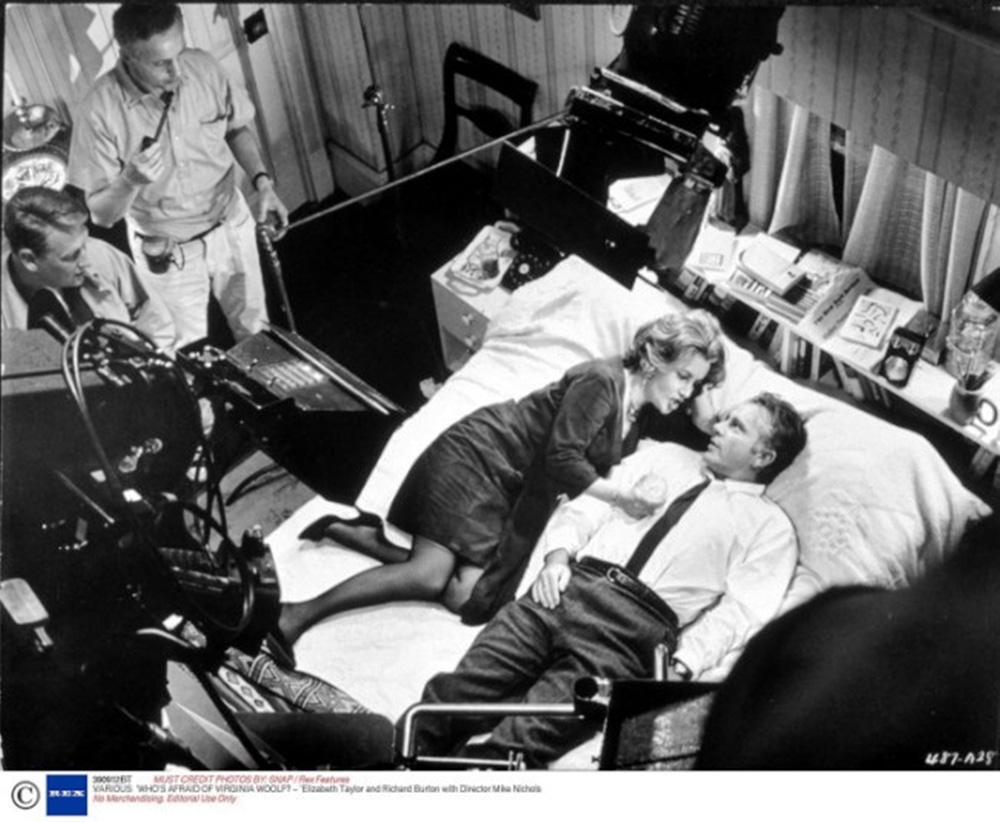 Who’s Afraid of Virginia Woolf? (1966) You thought your family was corrosive. Edward Albee’s 1962 stage triumph leaped to the screen in Ernest Lehman’s adaptation, directed by Mike Nichols. Two warring couples and their alcohol-soaked evening of anger and exposed resentments stunned audiences. Frank, code-busting language and depictions of raging middle-class malaise was delivered with frightening verisimilitude by Elizabeth Taylor and Richard Burton — they were Academy Award winner and nominee, respectively. They portray Martha and George, hardened, wilting, soused spouses who share their explosive evening with a vulnerable younger couple (George Segal, Sandy Dennis). Haskell Wexler’s claustrophobic staging and stark black-and-white cinematography enhance the characters’ raw emotionalism. This was Nichols’ screen directing debut, a triumphant announcement of his career fascination with the absurdities and brutality of modern life.
Who’s Afraid of Virginia Woolf? (1966) You thought your family was corrosive. Edward Albee’s 1962 stage triumph leaped to the screen in Ernest Lehman’s adaptation, directed by Mike Nichols. Two warring couples and their alcohol-soaked evening of anger and exposed resentments stunned audiences. Frank, code-busting language and depictions of raging middle-class malaise was delivered with frightening verisimilitude by Elizabeth Taylor and Richard Burton — they were Academy Award winner and nominee, respectively. They portray Martha and George, hardened, wilting, soused spouses who share their explosive evening with a vulnerable younger couple (George Segal, Sandy Dennis). Haskell Wexler’s claustrophobic staging and stark black-and-white cinematography enhance the characters’ raw emotionalism. This was Nichols’ screen directing debut, a triumphant announcement of his career fascination with the absurdities and brutality of modern life.
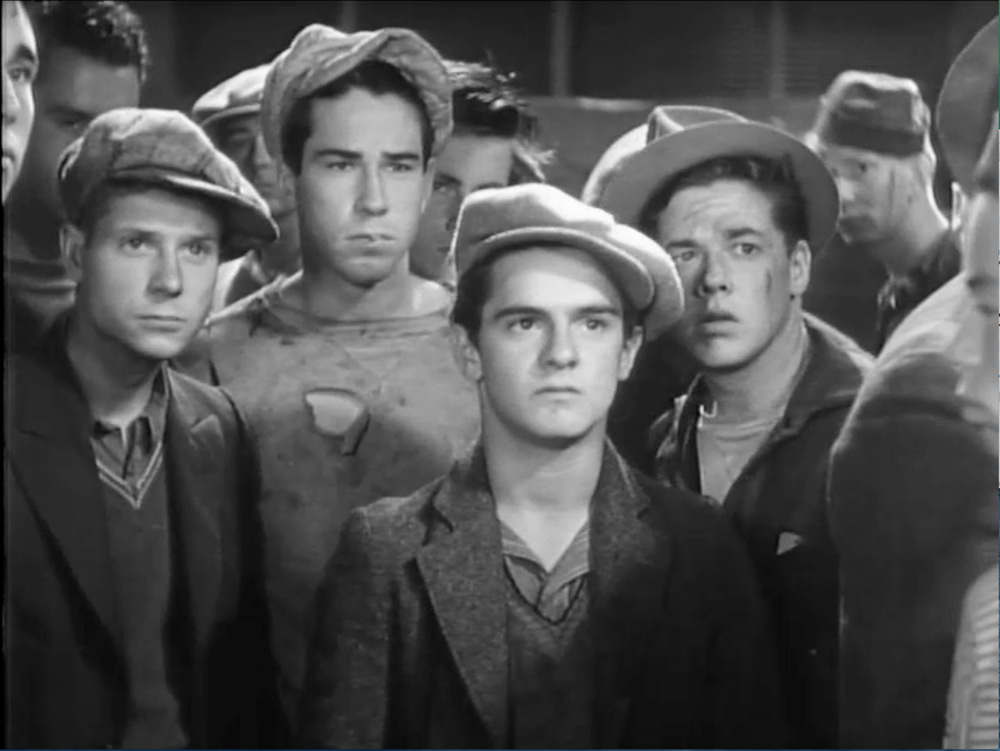 Wild Boys of the Road (1933) More than 250,000 American teenagers lived on the road at the height of the Great Depression, criss-crossing the country risking life, limb, and incarceration while hopping freight trains. William Wellman’s film portrays them as determined proto-adults matching wits and strength with railroad detectives as they shuttle from city to city unable to find work. Action-packed train sequences and powerful performances by young actors, particularly Frankie Darrow, make the film exemplary of the gritty “social conscience” dramas popularized by Warner Bros. in the early 1930s.
Wild Boys of the Road (1933) More than 250,000 American teenagers lived on the road at the height of the Great Depression, criss-crossing the country risking life, limb, and incarceration while hopping freight trains. William Wellman’s film portrays them as determined proto-adults matching wits and strength with railroad detectives as they shuttle from city to city unable to find work. Action-packed train sequences and powerful performances by young actors, particularly Frankie Darrow, make the film exemplary of the gritty “social conscience” dramas popularized by Warner Bros. in the early 1930s.
Previous Post: The Deafening Silence of Early American Film





